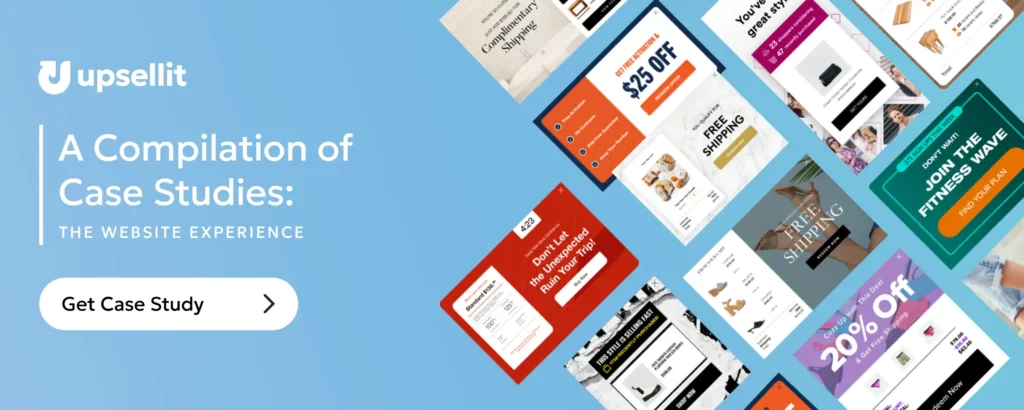Behavioral marketing uses real-time data about user actions such as clicks, time on site, or cart activity to deliver personalized, timely messages that guide shoppers toward conversion.
For ecommerce brands, it is one of the most effective ways to increase engagement, recover abandoned carts, and improve customer loyalty.
What Is Behavioral Marketing?
Behavioral marketing, also known as behavior-based marketing, uses real customer activity to deliver relevant, personalized content. Instead of relying on guesswork, it tailors messages across channels like email, onsite pop-ups, and retargeting ads, based on what users actually do on your site.
Common behavioral data includes:
- Time spent on a page
- Items viewed or added to cart
- Device type or browsing patterns
With Upsellit’s behavioral technology, brands can turn these actions into real-time engagement opportunities that drive measurable ROI.
Why Behavioral Marketing Matters
Today’s shoppers expect personalized, real-time experiences. Behavioral marketing helps brands meet those expectations by:
- Increasing engagement through personalized messages
- Reducing cart abandonment with timely reminders
- Boosting conversion rates with targeted incentives
- Improving customer retention through ongoing relevance
Behavioral marketing allows brands to meet customers exactly where they are in the buying journey, with the right message at the right moment.

Behavioral Marketing Triggers and Examples
Behavioral marketing campaigns rely on triggers, which are specific user actions that signal intent or interest. Let’s look at the most common and effective trigger types for ecommerce brands.
1. Time-Based Triggers
Timing plays a major role in behavioral marketing. Setting campaigns to activate based on time can make the difference between a bounce and a conversion.
Idle Time:
When a visitor pauses on a page, it may mean they’re undecided. Triggering a gentle reminder or limited-time offer can encourage them to complete their purchase.
Time on Page:
If a user spends several seconds or minutes on a product page, they’re showing strong interest. You can capture this intent with an incentive or highlight key benefits to encourage conversion.
Time on Site:
Some users browse repeatedly without buying. Create campaigns that target these high-interest visitors with special offers or messages that highlight urgency.
2. Device-Based Triggers
Shoppers switch between phones, tablets, and computers throughout their journey. Your behavioral marketing should follow them seamlessly.
Mobile Optimization:
Ensure your triggers are optimized for mobile visitors. Use clear CTAs, click-to-call buttons, and simple checkout flows for a better mobile experience.
Cross-Device Targeting:
If a shopper browses on mobile but doesn’t purchase, a desktop retargeting email can reconnect with them later, creating a consistent cross-device experience.
3. Cart-Based Triggers
Cart-based campaigns are one of the best-known behavioral marketing tactics, and for good reason. They recover lost sales and increase average order value (AOV).
Cart Value Thresholds:
When a cart total is close to qualifying for free shipping or a discount, trigger a message encouraging the shopper to add one more item. This increases both conversions and order value.
Product Recommendations:
Use items in the cart to trigger product suggestions. Highlight complementary or related products to personalize the experience and increase AOV.

4. On-Site Behavior Triggers
Every action a visitor takes provides insight into their intent. Monitoring these behaviors can help you deliver more relevant and effective campaigns.
Scroll Depth:
Trigger campaigns once users scroll past a certain percentage of a page. This ensures they’re engaged before seeing a message.
Back Button Detection:
If a visitor clicks the back button, it might not mean they’re leaving. Use this as a moment to show an incentive or highlight a key product benefit to keep them on-site.
Repeat Visits:
When a user visits your site multiple times, personalize your tactics. Offer loyalty incentives or exclusive discounts to reward engagement and encourage conversion.
How to Implement Behavioral Marketing
Putting behavioral marketing into action means using the right technology to monitor customer activity and trigger automated campaigns in real time.
Upsellit provides advanced tools to help ecommerce brands personalize every stage of the customer journey. From time-based pop-ups to automated remarketing emails, our solutions are designed to increase conversions, reduce abandonment, and build stronger relationships with shoppers.
Get Started with Behavioral Marketing
Behavioral marketing transforms the way ecommerce brands connect with customers. By leveraging behavioral data, you can deliver personalized, meaningful experiences that drive measurable growth.
See these strategies in action. Download Upsellit’s Website Experience Case Study to learn how top brands are turning behavioral insights into stronger conversions.

